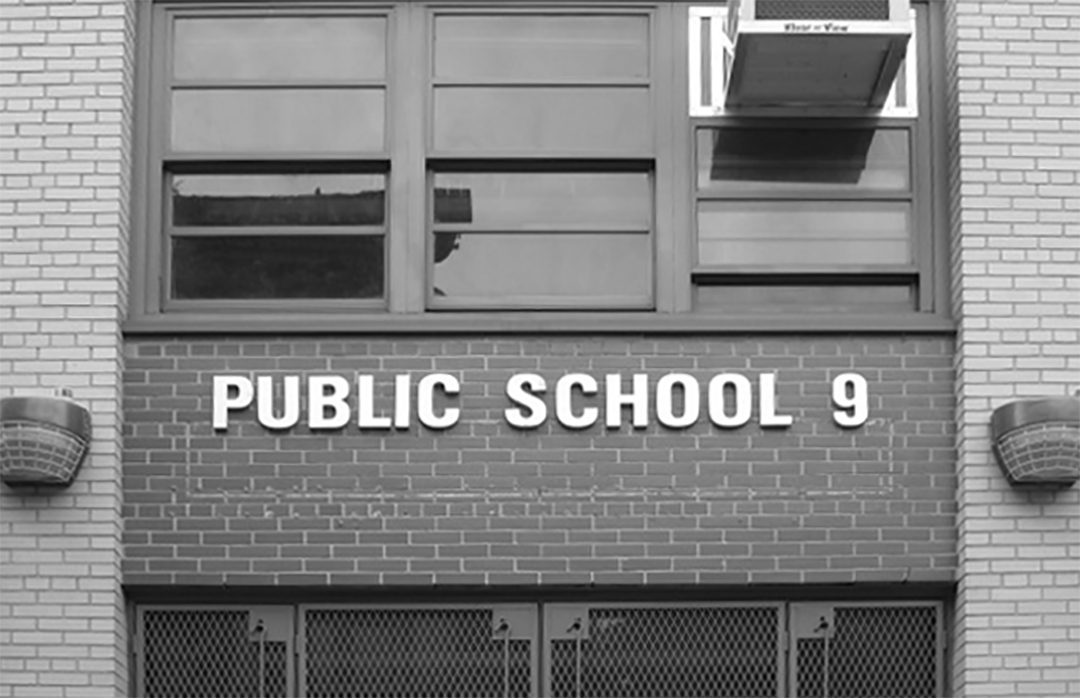
Public School 9: The Sarah Anderson School
by Max Chavez, for They Were Here, Landmark West’s Cultural Immigrant Initiative
By the middle of the 20th century, the area around 84th and Columbus had become a symbol of the city’s struggle against crime. The stretch of 84th Street between Columbus and Amsterdam had earned the moniker of “the city’s worst block,” a phrase that can be found echoed throughout newspapers of the era. Reports in the 1950s and 1960s contain frequent mentions of shootings and stabbings carried out in and around this block.
A New York Times article from July 1961 cites West 84th Street as “one of the city’s most troublesome breeders of delinquency” and makes notes of a July 5th “street battle” between “400 Puerto Ricans and Negroes.” While crime was surely a persistent issue in this area, the city’s newspapers’ focus on the ethnicities of criminals in the neighborhood likely fed a crueler racial agenda, lending a racist credence to the “worst block” designation. (In fact, one 1964 issue of Newsday jokingly suggests that if you, the reader, had not had a chance to see West Side Story onscreen or onstage, you could assume the role of a “bold anthropologist” and “witness the drama live, unrehearsed and without music, almost anytime by strolling along” the block, treating the lives of Puerto Ricans in the neighborhood as a punchline and insinuating uncivility and savagery.)[1]
In an attempt to stamp out crime on West 84th Street, Mayor Robert F. Wagner Jr. pursued an aggressive campaign of slum clearance on the much-maligned block. Even as early as 1962, the messaging was clear: urban renewal and displacement were the only cures for the block’s ills. A New York Times headline proclaimed: “’WORST’ IS OVER ON WEST 84th STREET.; Top Slum Block’s Problems Being Solved, City Says.” The article goes on to explain how this solution includes the eviction of over seven hundred out of one thousand families and the destruction of fourteen “slum buildings.”[2] By February 1965, the majority of the block (including the stretch of Columbus between 83rd and 84th) was razed to make way for the construction of Public School 9, then called the John Jasper School. Still, newspapers of the time hammered home the danger of the area—a New York Times headline in 1965 read: “WEST 84th STREET IS STILL FESTERING; Most of Slums Razed for 2 Schools, but Those That Remain Pose Problem.”
The school was opened that same year and while the street had certainly been improved in a way the city deemed acceptable, a wide swath of historic housing stock had been lost in the process—and this does not even begin to take into consideration the human toll of the clearance of 84th Street. Already struggling families on this block were forced to take up residence in neglected and disinvested public housing, moving the problems of 84th Street into other neighborhoods without addressing their root causes.[3]
The loss of the beautiful structures along Columbus Avenue between West 83rd and 84th Streets is a multi-faceted tragedy. At once an erosion of the historic built environment as well as an overall attack on families and communities of color, the execution of slum clearance here is one that was carried out across nearly every major American city during this time. Making it all the more shameful is the knowledge that this block and its stories were defined and deepened by a robust immigrant community, a social class that eventually became scapegoats for a citywide crime problem and cited as cause for rampant demolition. The story of 482-496 Columbus is a regretful one, informed by negligent city planning, community disinvestment, and the wholesale disposal of the immigrant communities that have made New York City a thriving and prosperous metropolis for centuries.
References
[1] Newsday, 22 Jun 1964, pg. 2C.
[2] The New York Times, 10 Jan 1962, pg. 29.
[3] “The Upper West Side, Then and Now.” John Podhoretz, May 2010. https://www.commentarymagazine.com/articles/john-podhoretz-2/the-upper-west-side-then-and-now/
Max Chavez is an architectural historian based in Chicago, Illinois.


